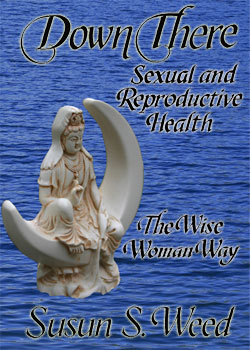Green greeting from myself and from the Standing People: the Trees.
Do you have a special tree that you love?
Do you have a forest where you can go to rest and renew?
The trees have mothered me since I was a little girl. (Though, truth to tell, the trees tortured me when I was young, too. There was an osage orange tree in the back yard that would hurl its soft-ball sized fruits at me whenever I was hanging the laundry out to dry.) I have always felt safe when in the woods, even knowing that there might be bears and wasps and lightning storms. The trees have always sheltered me, guided me, fed me, given me medicine.
This Saturday we will spend "A Day with the Trees." These Ancient beings have so much to share with us. And I am so honored to live among so many wise trees. Let me introduce you to some of my special friends in the forest.
We will begin with birch. We will find the anti-cancer Fomes mushrooms that grow only on birch. (And we may find some edible mushrooms too.) We will meditate on the axis mundi of the centuries-old oak that shadows my garden. We will encounter hawthorn and willow, missey-moosey and cedar, pine and elm and ash, and so many more. And we will take the time to listen to them, in the silence. I hope you can join me for one of my favorite classes.
Or join us Sunday for The Great Remedies." We will pick a wild salad and make some vinegars, tinctures, oils, and more with some of the most important, useful herbs available. We always have a great time when we roll up our sleeves and jump into the herbs, whether its yarrow or plantain, comfrey or clover, motherwort or day lily. There is so much to see and do in July!!
Are you feeling the slowing down that comes after summer solstice? No longer rushing, not headlong with desire, freed from the urgency of spring and early summer, the foliage and our psyches relax with the shortening days.
The tomatoes and eggplants swell lushly. The corn is tender and sweet. Greens abound. We are cooking the extra greens – kale, lamb's quarter, amaranth, collards, beet greens, turnip greens, chard – and freezing them for delightful meals this winter. There is always at least one cooked green on the table for my evening meal, and sometimes two or three.
Come with me for a weed walk and we will meet some greens (and a few colors). Or enjoy a summer recipe. And now is the time to get started on your Third Eye Opening Blend as well.
Green blessings are everywhere.
Here are some summer greens, ready to harvest right now. And a few colorful characters for your salads, too. Plus one poisonous, but very medicinal plant, often found growing in flower borders under its new name Actea racemosa.
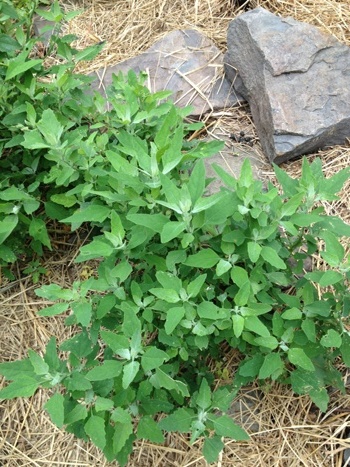
Lamb's Quarters (Chenopodium album)
This green is good all season. Pick it when young, pick it when it is flowering, pick it when it is full of seeds. Whenever you pick it, pick the leaves off the stalks, for they are too tough to cook. Sure, it takes some work to pick the leaves off. It took two of us about 45 minutes to make a 2 pound bag a lamb's quarter leaves ready to eat. Great nutrition for little effort.
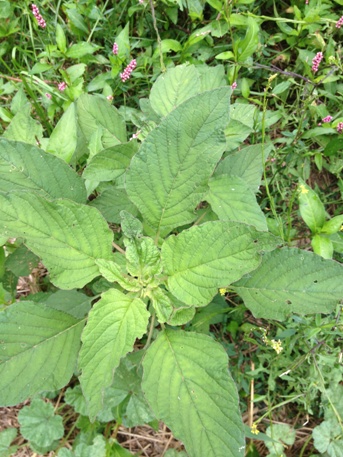
Amaranth (Amaranthus retroflexus)
This green is only good before it flowers. But you don't have to pick the leaves off the stalk, as the stalk is tender and cooks up well. Look for young plants, like this one, with no flower buds. If there are some flower buds starting up, pluck them out. Once flowering gets serious, there will be too many flower buds to easily remove. At that point, I just let it flower and plan on harvesting the seeds in the fall.
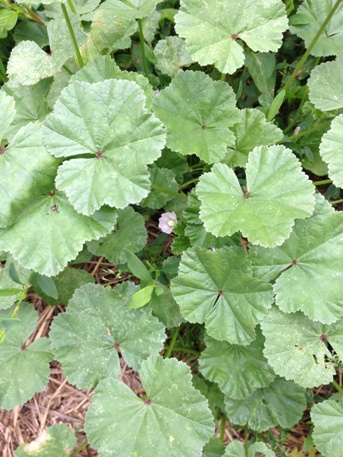
Mallow (Malva neglecta)
I don't usually cook this green, as it gets all slimy and reminds me of a childhood of okra loathing. Both the leaves and the flowers are delightful in salads, as are all its sisters and cousins that grow around me: Rose of Sharon, hibiscus, and musk mallow (Malva moschata). The roots of the mallow are the part used as medicine; but that will have to wait until after frost.
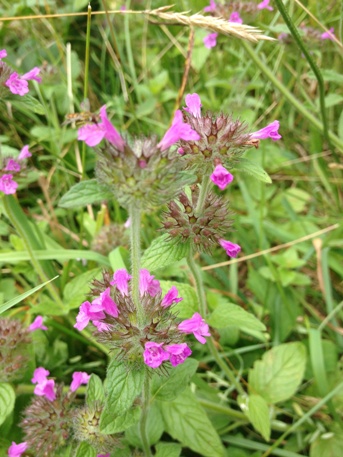
Wild basil (Satureja vulgaris)
What a beautiful flower. What a lack of scent. Whoever named this plant must have had a head cold. I have never met even one of these with the slightest scent. It's a mint, so it is edible, but why bother.
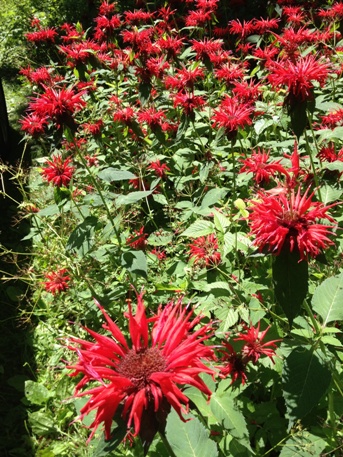
Red bergamot (Monarda didyma)
Indeed, why bother with wild basil when red bee balm, aka monarda, aka Oswego tea, is to be had! This mint is tall, stately, and gorgeous. Tastes fantastic too. I use the flowers in summer salads; makes a great contrast with orange day lilies. I also make it into a vinegar and dry lots to use when I make my comfrey infusion. I add one dried stalk of red bergamot to each ounce of dried comfrey. Yum, yum. The other colors of this mint are considered more medicinal because they have more aromatic volatiles. They can be used, cautiously, in salads.
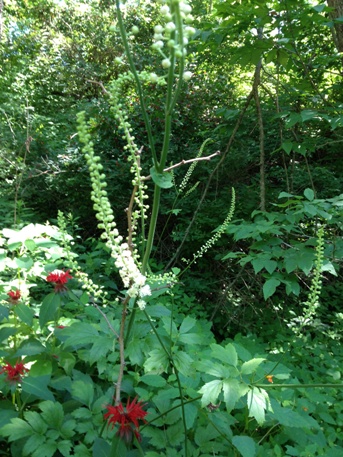
Black cohosh (Cimicifuga racemosa)
Do not eat this pretty plant. Do not put it into salads or do anything else with it. In the fall, if you wish, you may dig the perennial roots and tincture them. Lots of uses for that tincture; all discussed in detail in my book New Menopausal Years the Wise Woman Way.
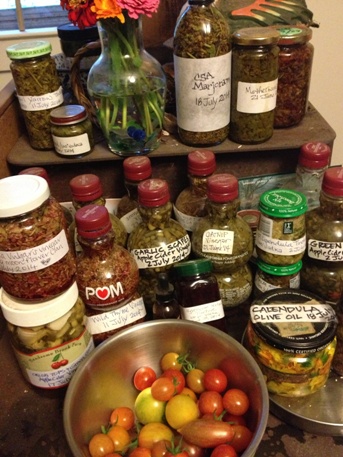
Look at all the tinctures, oils, and vinegars the apprentices and I have made in the past month. Join us this Sunday and make some with us. Green blessings are everywhere.












